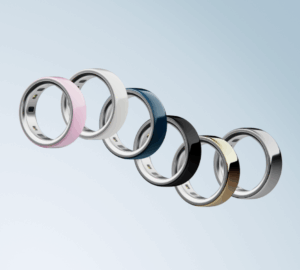By now, we’ve all seen countless images of people receiving the COVID-19 vaccine. But once you actually get the shot in your arm, what happens inside your body as your immune system ramps up?
Members of the Oura Community have been reaching out to share their stories of how their bodies are responding to doses of the COVID-19 vaccine.
What The Oura Community Has Seen
Sean L.
“I had a little soreness in my arm, but my temperature was up +1.2 degrees Fahrenheit, and my heart rate was slightly up. It also showed I tossed and turned more than usual. Fascinating to see the vaccine’s effects.”

Nancy O.
“Guess the temps of 1st & 2nd vaccine shots, on a body temperature timeline detected by my @ouraring #PfizerCovidVaccine #Ouraringbodytemperature”

Lauren B.
“I read that the J&J being one-and-done means it has a higher impact on most people? I had chills, hot flashes, and felt really achy for 24 hours. I could tell my body was hard at work.”

Zubair A.
“Oura picked up fever caused by COVID vaccine…”

Josh G. & Monica M.
Josh: “Just as we have our own unique bedtime routines, our bodies reacted uniquely to the first COVID-19 vaccine dose.”
Monica: “Yeah. Josh’s temperature immediately went up and had sweats through the night. I was expecting to feel the same (or worse), but I went through the rest of the day and night with no symptoms at all and no abnormal temperature increase.”

Jon B.
“So this is what happens to your overnight temperature after you have had an AZ vaccine. Otherwise no symptoms.”

Brad
“Other than a slightly sore arm (certainly less than the soreness that I typically get with the flu vaccine) the day of and the day after, I had no other symptoms or sensations…”

How Does The COVID-19 Vaccine Work?
Traditionally, many vaccines — including the seasonal flu shot — have included a weakened or inactivated amount of virus that triggers an immune response in our bodies. The COVID-19 vaccines from Pfizer and Moderna operate a little differently using a technology called “messenger RNA” or “mRNA.”
The new mRNA vaccines do not use a live virus. Instead, they work by providing a set of instructions for cells in your body to make a piece of the virus that causes COVID-19 called a “spike protein”. When your body starts to produce spike proteins, your immune system sees it and immediately mounts a response to protect you from a future encounter with COVID-19. [Read more from the NYT]
We’re still learning exactly what that immune response looks like in the body and how that might differ from illnesses we’re more familiar with, like colds and the flu.
What Signs Can You Spot?
When your body is under stress, whether from an actual illness or preparing an immune response, you can keep an eye out for common signs that your body is under strain:
- An increase in resting heart rate
- A decrease in heart rate variability
- Body temperature or respiratory rate outside your normal range
- A change in sleep quality
What Can You Do To Prepare?
If you’re looking for ways to take care of your health, keep in mind that sleep has the power to boost your immune system:
- “Research shows that individuals sleeping 6 hours or less a night were more than 4 times more likely to catch a cold compared to those who were logging 7+ hours of sleep.”
- “Another study showed that people who slept fewer than 6 hours, on average, were far less likely to show the antibody response a vaccine is designed to trigger. Sleep-deprived individuals were 11.5 times more likely to be left unprotected by the vaccine than people who were getting 7+ hours of sleep.”
If you have an Oura Ring, you can use Rest Mode to temporarily mute your activity goals and prioritize recovery after your vaccine or leverage Tags to monitor your symptoms as you recover.
What’s Next?
Researchers at Oura will continue to look for meaningful patterns and share what we learn with the Oura Community.
In the meantime, if you’ve seen changes in your own data that might help others, please share your story with us.
You can also read more about members of the Oura Community who have experienced COVID-19:
Or learn more about Oura’s contribution to COVID-19 research:
In 2020, the Oura Ring was shown to have the ability to identify early COVID-19 illness symptoms. According to the CDC, you can be infectious 2-3 days before you’re symptomatic, and analysis of 50 COVID-19 cases revealed that Oura temperature data can spot pre-symptomatic signs of a fever in 76% of people by flagging when an individual is deviating from their normal temperature patterns.










